Dyeing yarn has been on my to try list for AGES and a few weekends ago I finally got around to it! I so enjoyed the process. I have some acid dyes that I want to try, but they are toxic and you need a dedicated dye pot, which I don’t have (yet). So, I thought I would give some natural yarn dyeing a go first.
In this post, I’m going to show you how to dye yarn with avocado. Yes, you read that right. Avocado!
I adore the vintage / blush pink color that this form of natural dyeing creates. But, repeating the exact colorway with natural dyes is HARD.
There are so many variables, like; how much dye is in the dye source (i.e. the avo), what the pH of your water is like, the purity of your water, air pressure, temperature. There are just too many things to try and control. So, if you want to use natural dyes for a specific project, make sure to dye enough skeins of yarn in one batch.
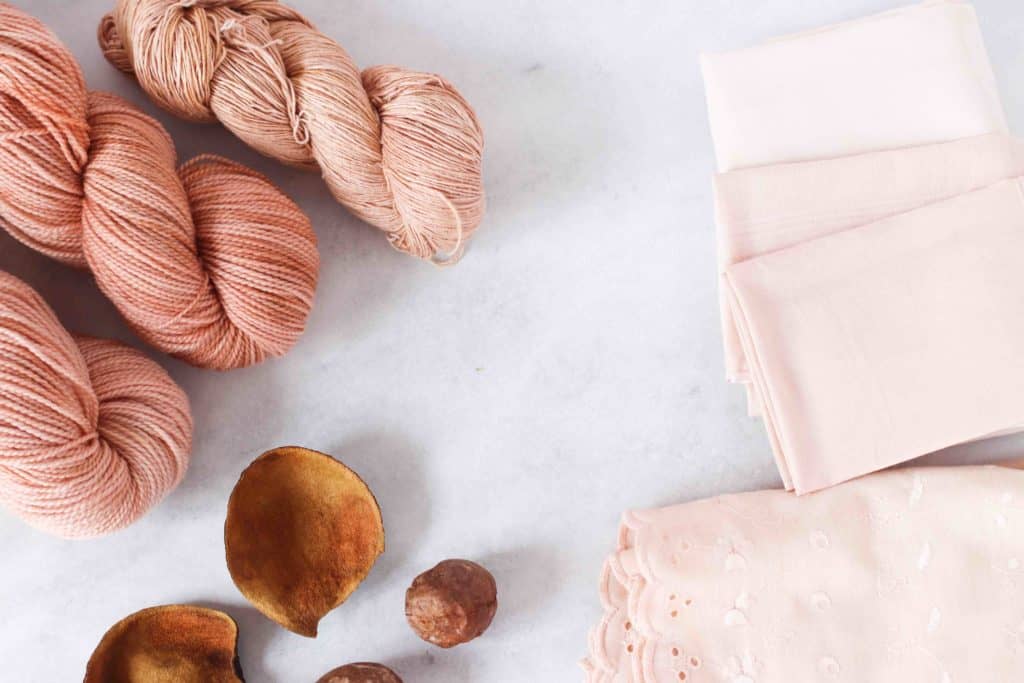
What you need:
A large stock pot
Avocado skins and pits* (I used the dried skins and pits of about 8 Haas avo’s which have a dark skin)
Approximately 4L of water
Dyeable yarn and whatever else you want to dye (I used an old pillow case and some other pieces of cotton fabric I had around the house. I’ll include a list of suggested dyeable yarns later in this post. I used 2 skeins of 100% superwash merino and 1 skein of silk yarn)
A few cable ties
Stove top
Sieve
Swimming pool tester strip (optional)
Bicarbonate of soda (optional)
*I stored my avo skins and pits in the freezer during avo season. You can also dry them out and then store them in a brown paper bag until you are ready to dye.
Get dyeing!
1. Make sure your avo skins and pits are clean. Get rid of as much of the green flesh as possible, as you don’t want that sticking to your yarn. Gather all your supplies and get ready to play with color. You may want to wear old clothes, or an apron, to avoid any splashes.
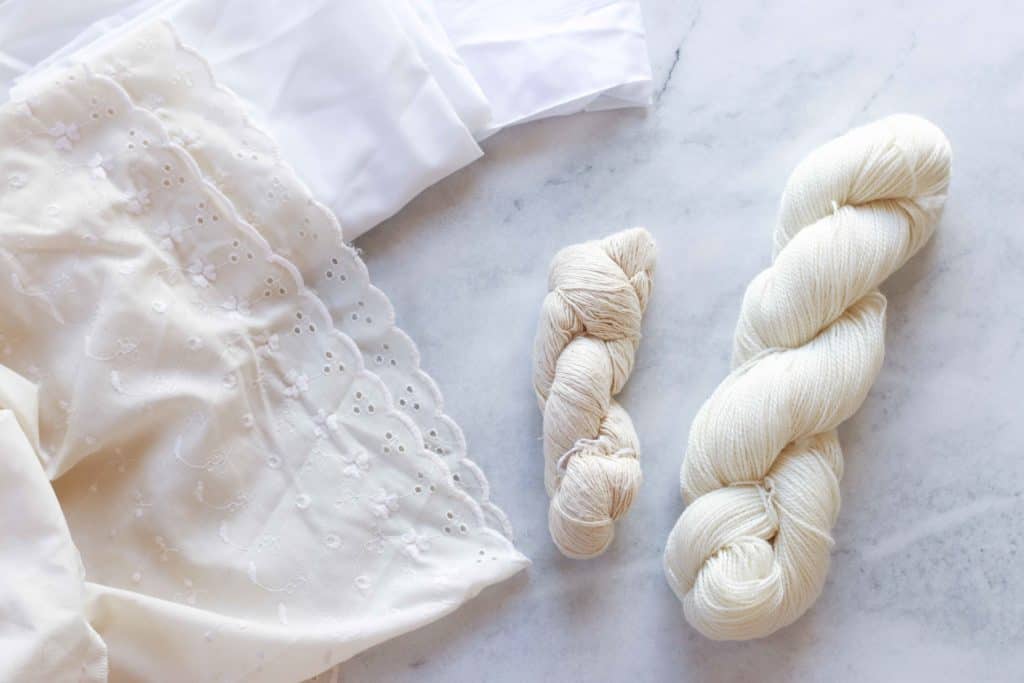
2. Place the pits and skins in a pot of water (approx 4L, but you can use as much water as you need) and bring to a gentle simmer. I simmered my dye for about an hour. Try not to boil the water as that can degrade the color.
In the mean time, unwind your hank of yarn and place a cable tie or two loosely around either end of the skein. Make sure not to tighten the cable ties too much as they will block the dye from adhering to the yarn and will result in an uneven color.
Soak the skein(s)/fabric in some fresh water so that it is thoroughly wet. This allows the dye to adhere more evenly to the yarn.
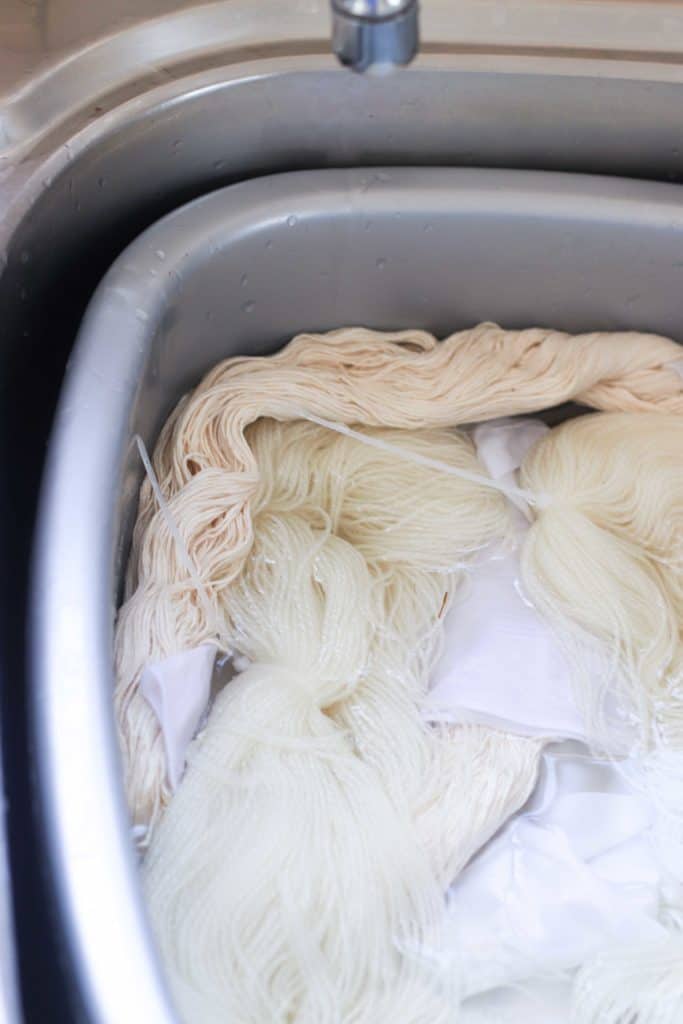
3. Once you have a nice color in your dye pot, turn off the heat and strain the dye to remove all the pits, skins and other bits. I checked the alkalinity of my dye because apparently the more alkaline, the nicer the pink color.
Mine seemed a little orange and so I checked the alkalinity with a pool tester strip, and sure enough it was low! (Remember, low pH = more acidic, higher pH = more alkaline). First I added some bicarbonate of soda to up the alkalinity, but it didn’t really do much (and I ran out…), so I ended up using a teaspoon of swimming pool alkalinity regulator to up the pH.
If you look at the image of the pool strips below, pH is measured on the 2nd patch from the left of each strip. The top strip is the test before I adjusted the pH, and the bottom strip is afterwards. You can see that the color of the patch on the top strip is closest to the pH marked as “very low” (i.e. acidic). Once I’d added the bicarb and the alkalinity regulator, the pH shot up and became much more alkaline.
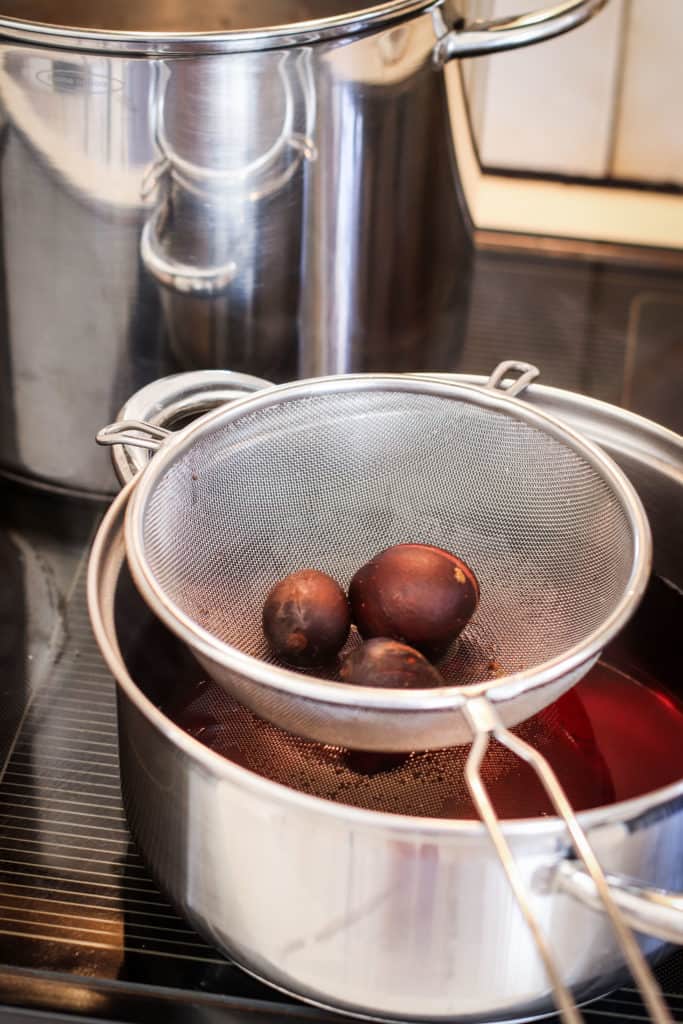
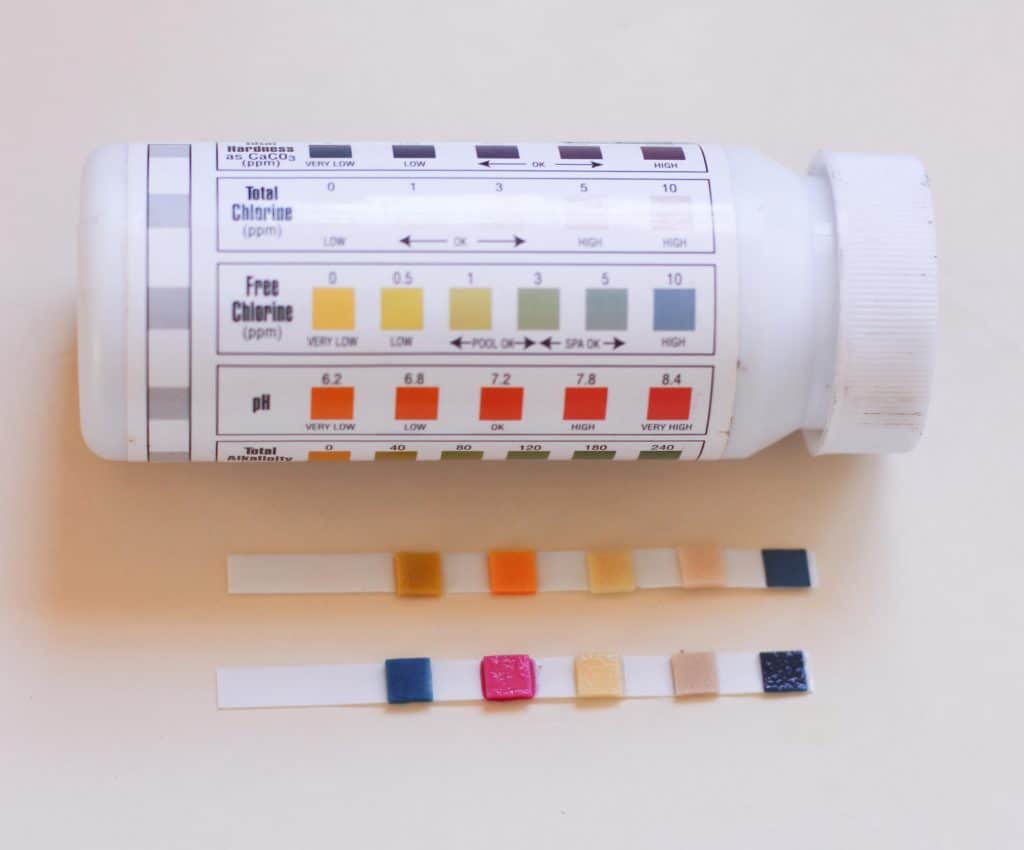
4. Now we are ready to add our fibre! Gently squeeze out any excess water from the skeins that have been soaking, and place them in the dye bath, making sure to cover them with dye completely. If your dye is still warm, remember that heat and agitation can felt wool, so be gentle!
Allow the dye to work it’s magic. The longer you leave your yarn in the dye bath, the deeper the color will be. I left one skein in for 4 hours (darker of the two skeins pictured below) and another in for 2, but I could easily have left them in over night for a darker, more solid color.
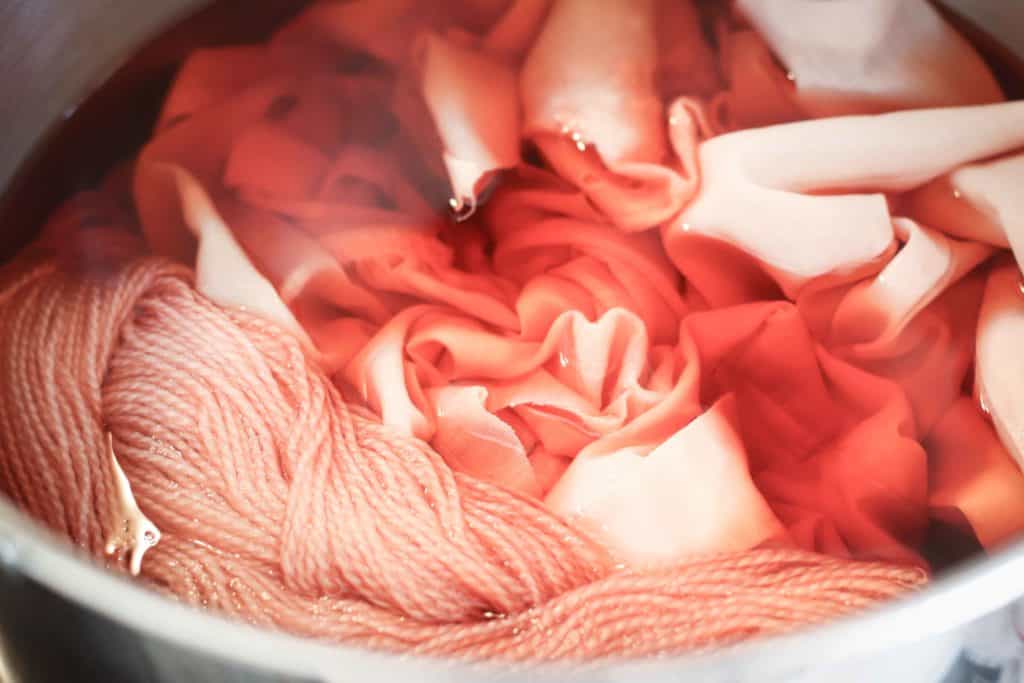
5. Once the skeins and dye are completely cool, and you have a color you are happy with, gently rinse off any excess dye and hang out to dry. Make sure that your skeins are 100% dry before you twist them back into a hank or wind them into a ball. Be aware that the color will lighten up as the yarn dries.
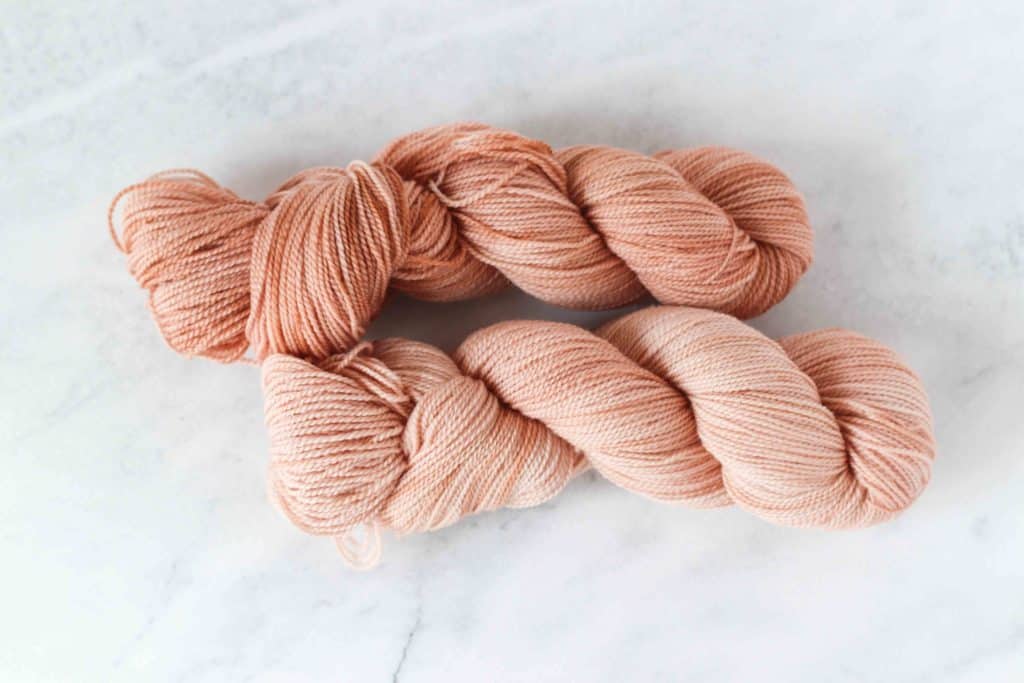
FAQ
Why don’t I need a mordant?
A mordant, or fixative, is a substance used in regular dyeing which helps the dye adhere to the fibre. With avocado, and some other forms of natural dyeing, the avocado has tannins which act as a natrual mordant.
Why must I wash the avo skins and pits so thoroughly?
Firstly, the little green bits can get stuck in everything and can be tricky to get out, so you want to get rid of as much as possible. The avocado flesh also has zero dye value and in fact, can make your dye color a bit muddy, so best to not add it to the dye pot. I use a teaspoon to scrape off as much flesh as possible before I start my dyeing process.
What pot should I use?
Ordinarily with dyeing, one should use a dedicated dye pot, but because the process is entirely non-toxic when using avocado, you can use a regular stock pot! I would suggest using a stainless steel pot rather than aluminium, as the aluminium may react with the dye and change the final color.
Why mustn’t I boil the dye?
Natural dyes can be fragile, and if you boil the dye the color will degrade (from a nice blush to a brownish beige!). However, heat also helps the dye process, so a gentle simmer, or just below is fine.
What yarn bases should I use?
You want to make sure that the yarn that you choose to dye is suitable dyeing. Most acrylic yarn won’t dye well at all, and if it does, it may run when you wash it. I tried using 100% merino and a skein of silk, both are protein based yarns. I also tried dyeing some cotton fabric which did take up some color, but not as much as the wool. Be aware that the color of your base will affect the final color of your dyed yarn. If there is a yellow undertone to your yarn, then you will end up with a warmer, more orange pink than if the base was completely white.
Home dyeing of yarn is becoming quite popular, so undyed skeins are not too hard to come by. Some suggestions:
Knit Picks Bare Yarn
African Expressions Charmed (100% superwash Merino)
There are also LOTS of options for undyed yarn on Amazon
Let me know if you have any questions! Also, I’d love to hear about your yarn dyeing adventures, so make sure to tag me on social media or send me an email.
You might also enjoy!
>> Yarn Thickness | What is Yarn Weight
>>How to crochet with t-shirt yarn | Tshirt Yarn Tips
>>How to change color in crochet
>>How to wet block crochet squares
Looking for some more crafty projects and tutorials? Head over to the patterns and tutorials page to find more.
Happy yarn dyeing friends!
Yours in craft,
Caitie

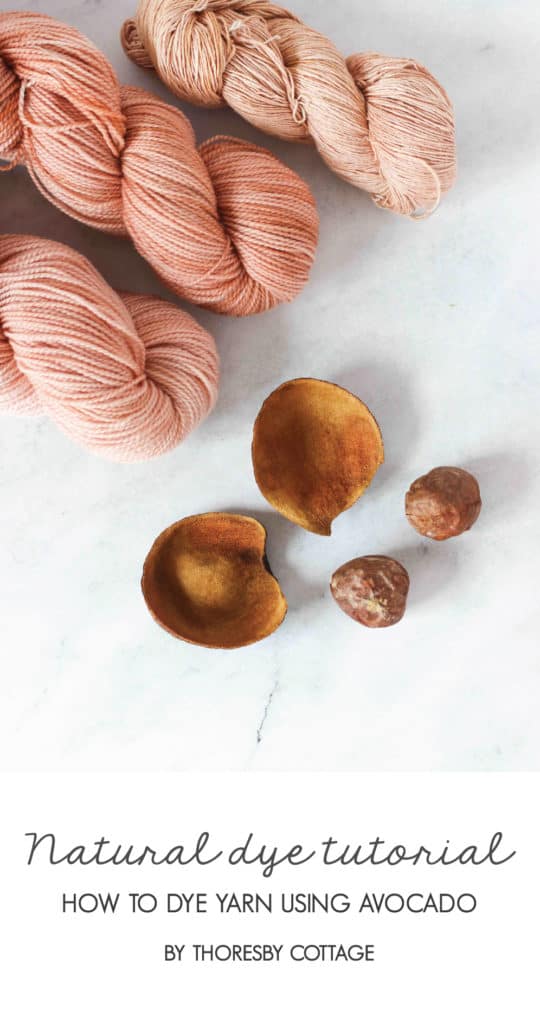

Lovely colors! I must try this..:-)
Thanks so much, I can’t wait to get started. I love the shades it came out, very pretty.
Is there a chart of somekind that will tell you what plants, etc, give you ‘this or that’ color?
There are definitely botanical dye books out there that would give you an indication of the type of color you can expect. There are lots of variables with natural dyeing though (e.g. amount of pigment in the dye, acidity of the water, even air pressure!) all of which influence the shade and vibrance of your dye. For that reason, creating the exact same color in a repeatable way with botanical dyes is virtually impossible. But yes, you can expect certain plant matter to dye a particular range of hues (e.g. yellow, red, pink etc)
I had a lot of dried skins and put them in a plastic bag. They got moldy. Duh. Do they not get moldy in a paper bag? Or do I need to freeze them until I have enough to use?
If they are dried completely then they should not go moldy in the brown paper bag. I didn’t dry mine before I put them in the freezer, but rather defrosted and dried them when I needed them. But either method seems to work!
Can I do it in the bath? Or will it stain the bath?
It depends on what your bath is made of, but it could do… I would suggest it is probably better to get a big basin or bucket that you can do your dyeing in – one that you don’t mind if it does stain.
This is such a cool idea. I love it is a natural dye. I also love your pictures 🙂